A Maine snapping turtle went viral last year after being run over. Now, he's ready for the wild
ELIOT, Maine – After fending off death, a critically-injured common snapping turtle struck by a motorist last year has been released back into the wild.
The Center for Wildlife in Cape Neddick, Maine, has been treating and rehabilitating the 20-pound wounded male reptile since late last year, when it was admitted after being found by a mother and daughter on the side of a side road last September.
The group estimates Eliot Snapperton is about 40 years old.
Although the Center for Wildlife doesn't name their animal patients, rescuers and community members "lovingly" began referring to the turtle as Sir Eliot Snapperton, Center for Wildlife Executive Director Kristen Lamb said.
LA sheriff: Backtracks after suggesting criminal investigation included LA Times reporter
Parkland school shooter case: Deputies protect Nikolas Cruz after potential juror makes threat
The Center for Wildlife is one of the only facilities of its kind in the region and has always had a good following on social media, but something about this creature’s story resonated. For a period of time, employees would carry the turtle from a tub into a private room where the sink was so it could take sips of water.
A video of the animal, which sustained a major fracture of its shell and wounds which stretched into its organs, cautiously drinking water last year at the Center for Wildlife quickly went viral on the center’s Facebook page with over 6.5 million views.
Two surgeries and several months of incremental progress later, the turtle is back in an outdoor freshwater setting.
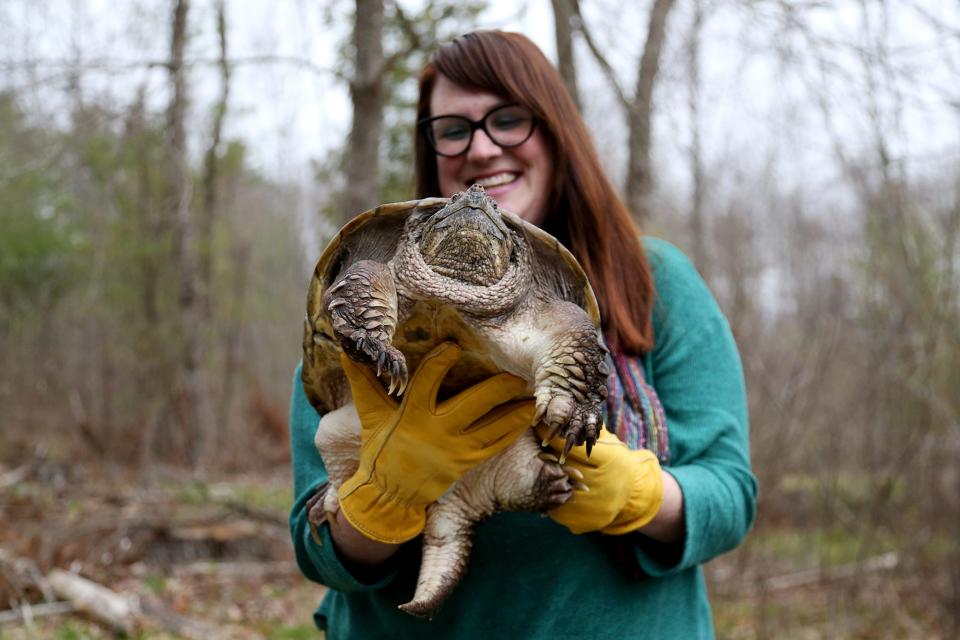
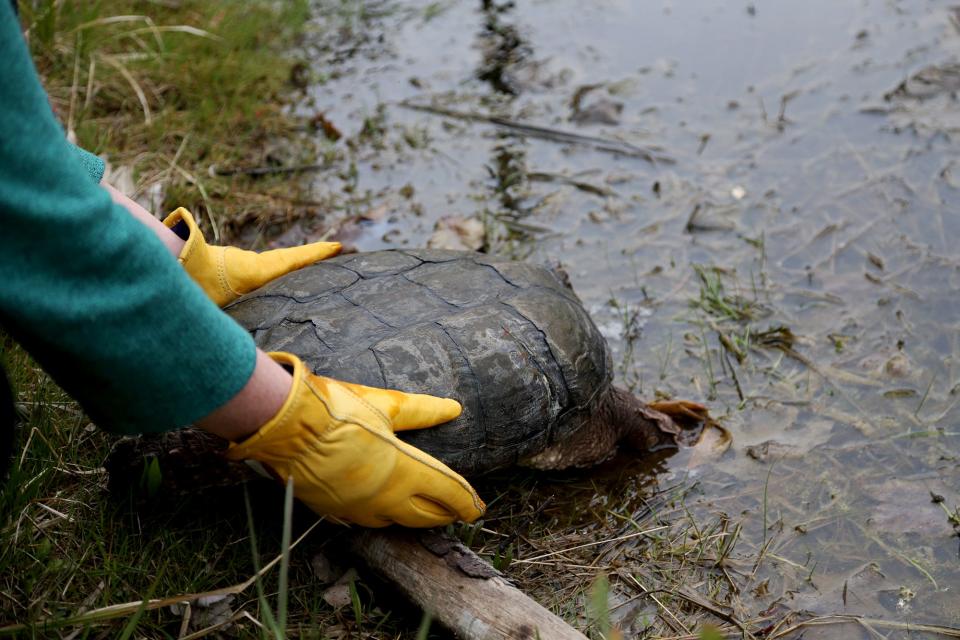
Tuesday, the turtle was brought to a pond across the street from the Eliot Police Department, completing a seven-month-long recovery. Lamb explained that the snapping turtle spends the warmer months in that pond before hibernating in a pond next to the police station.
“He was in really, really critical condition, just really bad shape,” Lamb said of when the turtle was admitted to the Center for Wildlife. “He lost a lot of blood.”
Made of bone, a snapping turtle’s shell can withstand damage, but the extent of the creature’s injuries were severe, Lamb said.
“It was clear that he wasn’t just hit by a tire and sent flying,” she said. “He was run over by a vehicle.”
Brackets were used to secure a fracture on the turtle's shell on the fourth day of his stay at the Center for Wildlife and his torn skin was repaired. A concoction of surgical glue, collagen, beeswax and silver sulfadiazine was used as coating on the reptile’s wounds.
“He had all of that stuff packing his wound and acting as the barrier to his body cavity and his organs, but he wasn’t sealed,” Lamb said.
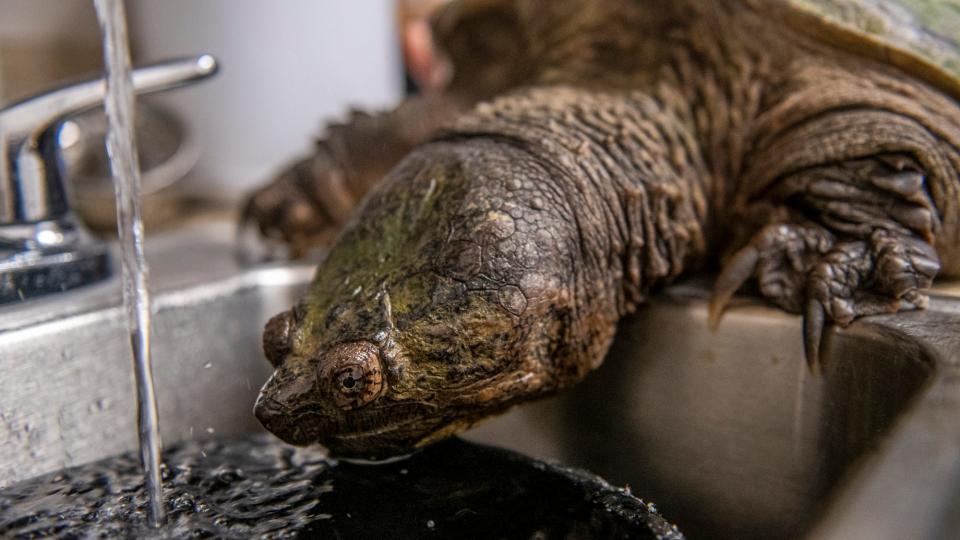
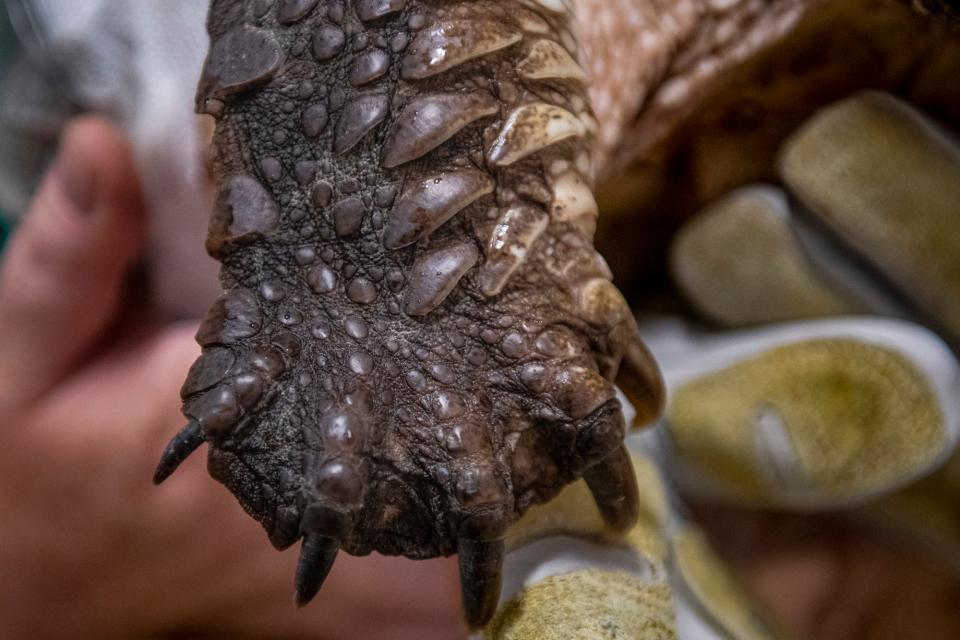
Because the wound went through its shell and its organs, the snapping turtle could not be submerged because it could essentially drown if water seeped in.
In mid-November, less than two months after his surgeries, the Center for Wildlife team placed the snapping turtle in water for the first time since it was hit.
Lamb said it was "scary" because there was still a risk that the water could flow through the wounds and harm the turtle. If water began trickling out of the snapping turtle’s nostrils, that would have meant that its lungs were filled with water.
But not yet two weeks after that, not only was the snapping turtle safe in the water, he was back in it full-time. In the five months since, the turtle has been kept inside the Center for Wildlife tubs of varying depths with the windows open to mimic the feel of being outdoors.
Before Tuesday’s release, Lamb said the Center for Wildlife patient had become a bit more “grumpy” with staff, occasionally snapping in their direction when tending to him.
“That means he’ll be ready and do a good job protecting himself,” Lamb said before his release.
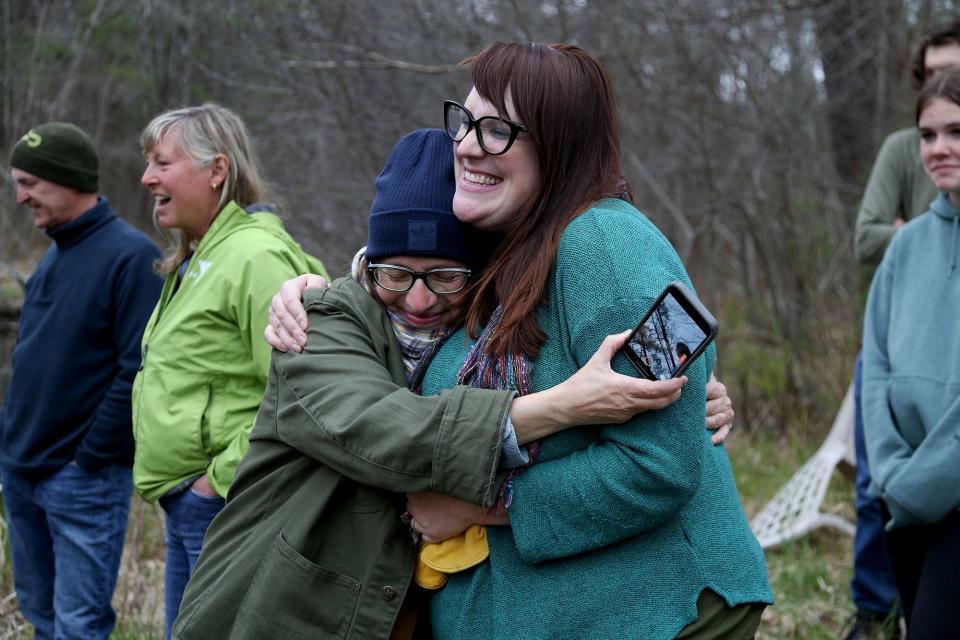
Most of the larger snapping turtles with extensive trauma that the Center for Wildlife treats don’t meet the same fate. Unlike the organization’s viral patient, most that have similar internal bleeding die.
Maine’s Department of Inland Fisheries & Wildlife reports that common snapping turtles are one of the world’s most ancient living organisms and evolved between 60 and 100 million years ago. Though “elusive and shy” when in the water, the species is aggressive on land.
The omnivorous species hibernates in the bottom sediments of freshwater settings and older snapping turtles usually are covered in algae, resulting in a greenish and gray appearance.
This article originally appeared on Portsmouth Herald: Viral Maine snapping turtle that was hit by a car returned to wild

